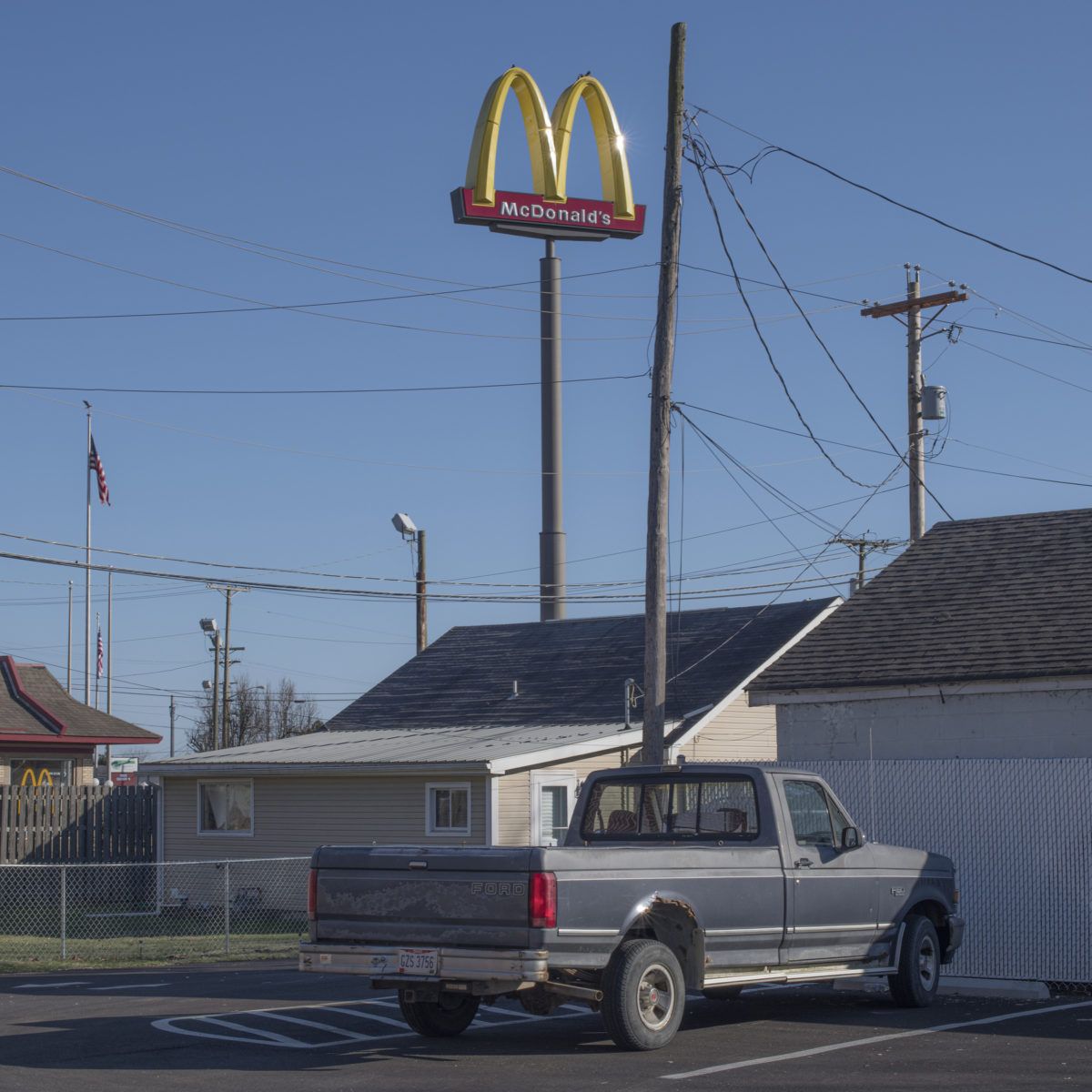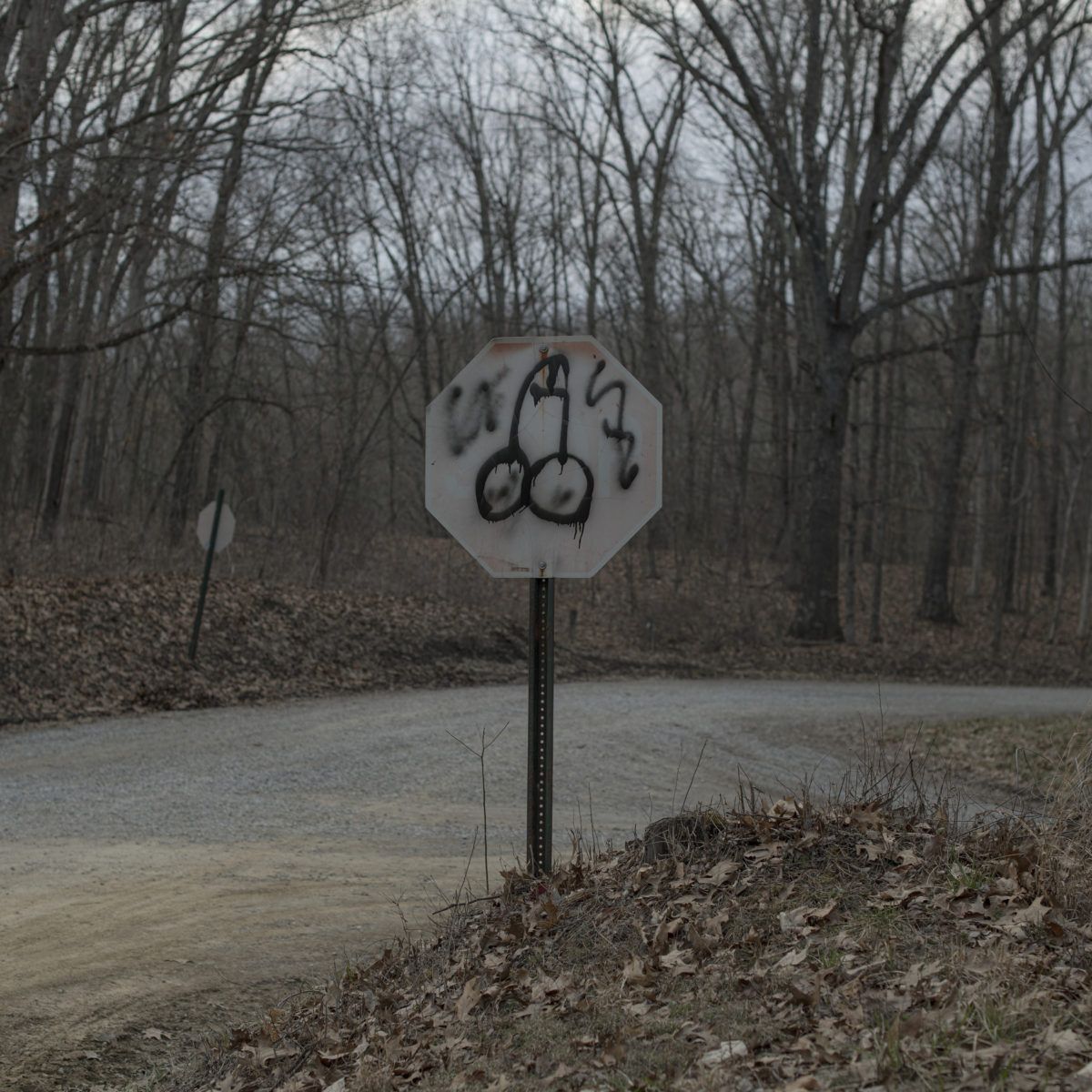blog
Book Review: Little Cities by Rich-Joseph Facun

From ‘Little Cities’ © Rich-Joseph Facun
In his second monograph, Little Cities, Rich-Joseph Facun guides viewers on a meandering meditation through Southeastern Ohio by depicting the vernacular post-industrial landscape. In their quiet formality, the images call to mind past dreams, and prompt us to look beyond what can be seen on the surface. Facun’s work explores some of the remaining signs of the Indigenous communities who once called this region home. Through mankind’s self-conceit, we believe we shape the land we live on. It is often treated like a blank canvas for man’s folly, without regard to its heritage. Facun’s photographs remind us that the landscape contains memory, and it is witness to our misdeeds.
“While working on my previous monograph (Black Diamonds) that focused on the postindustrial era of former coal mining boom towns,” Facun writes, “I began to contemplate the man-altered landscape and the ways in which humans interact with their environment. This curiosity led me to narrow the scope of my gaze.”
Little Cities a visual exploration and reflection on how cultural forces influence our relationship with the land. It examines how both Indigenous peoples and descendants of settler colonists inhabited and shaped the landscape around them. Facun’s work includes images of sacred Indian burial mounds (specifically in southeastern Ohio) juxtaposed with suburban housing developments, webbed power lines, and vernacular Midwestern commerce. Hundreds and hundreds of years have elapsed since the last Indigenous tribe was relocated from this region of Appalachia. The decades of time since then passed the blink of an eye in comparison. We may never fully reconcile these incongruous scenes, histories and layers.

From ‘Little Cities’ © Rich-Joseph Facun

From ‘Little Cities’ © Rich-Joseph Facun

From ‘Little Cities’ © Rich-Joseph Facun
The images included in Little Cities follow the same direct, observational style of Facun’s work in Black Diamonds but there is a noticeable difference in the number of images which feel dark and arresting. Technically speaking, these images are made low contrast and processed (chemically or digitally) so the full contrast of the image is stunted.
Images printed, or processed in this way to result in an image which results in a dark, muted, or low-key image could evoke a number of different responses. I’ve seen images employing this technique in Dawoud Bey’s, Night Coming Tenderly, Black or Elliott Verdier’s project Reaching for Dawn. These images evoke a dreamscape, or a harbinger of doom, or a dark night in search of a metaphoric dawn. They could also possibly be employed to call forth products of imagination rather than factual realities.

From ‘Little Cities’ © Rich-Joseph Facun

From ‘Little Cities’ © Rich-Joseph Facun

From ‘Little Cities’ © Rich-Joseph Facun

From ‘Little Cities’ © Rich-Joseph Facun
Facun has spoken on more than one occasion about his effort to present an authentic look into endangered, bygone, and fringe cultures—exploring those transitions in time where the specific places fade but people who embody those cultures remain. His own cultural background has heightened sensibility toward these themes, and his exploration of place, community and cultural identity are a steady current throughout both his life and his photographic practice. His low key image technique potentially emulates the collective zeitgeist present after a global pandemic dramatically altered the world-view of million and millions of people. Who could be blamed for an extra tint of pessimism or fatalism in one’s art as of late?
However, I consider and contemplate Facun’s husky images in a different way. To me, they are something akin to a blackened cajun dish. The cooking method relies on the combination of browned milk solids from butter, and spices which char the instant it lands in a heated pan; creating a punch of flavor while sealing and protecting the meat within. The blackening comes not from food being burnt, but through a process which evokes the flavor and style of charcoal grilling. Facun’s smoky, tinted images add a layer of visual flavor which prompts the viewer to linger just a bit longer, to consider the ingredients and amount of heat required to give rise to this work – and savor the images placed before them.
::

Little Cities by Rich-Joseph Facun
59 color photographs
1 Vintage photograph
Essay by Rich-Joseph Facun
Published by Little Oak.PRESS
Hardcover, 7.75 x 9.75 inches
128 pages
First Edition of 500
::
Rich-Joseph Facun is a photographer of Indigenous Mexican and Filipino descent. His work aims to offer an authentic look into endangered, bygone, and fringe cultures—those transitions in time where places fade but people persist. The exploration of place, community and cultural identity present themselves as a common denominator in both his life and photographic endeavors. www.facun.com
Facun creates commissions for various publications, including NPR, The Atlantic, The New York Times, The Wall Street Journal, Vox, and Adweek, among others.
Additionally, Facun’s work has been recognized by or featured in Photolucida’s Critical Mass, CNN, British Journal of Photography, The Washington Post, F-Stop Magazine, Feature Shoot, The Image Deconstructed, The Photo Brigade, Looking at Appalachia, and Pictures of the Year International. His first monograph, Black Diamonds, was published by Fall Line Press in 2021.
Little Oak.PRESS is an independent publisher located in Charlottesville, Virginia.
LO.P produces a range of publications from newsprint public-art projects to zines, limited-edition artist books and maquettes. See their available list of fine books – https://www.littleoakpress.com/
Location: Online Type: Book Review
Events by Location
Post Categories
Tags
- Abstract
- Alternative process
- Architecture
- Artist Talk
- artistic residency
- Biennial
- Black and White
- Book Fair
- Car culture
- Charity
- Childhood
- Children
- Cities
- Collaboration
- Community
- Cyanotype
- Documentary
- Environment
- Event
- Exhibition
- Faith
- Family
- Fashion
- Festival
- Film Review
- Food
- Friendship
- FStop20th
- Gender
- Gun Culture
- Habitat
- Hom
- home
- journal
- Landscapes
- Lecture
- Love
- Masculinity
- Mental Health
- Migration
- Museums
- Music
- Nature
- Night
- nuclear
- p
- photographic residency
- Photomontage
- Plants
- Podcast
- Portraits
- Prairies
- Religion
- River
- Still Life
- Street Photography
- Tourism
- UFO
- Water
- Zine

Leave a Reply